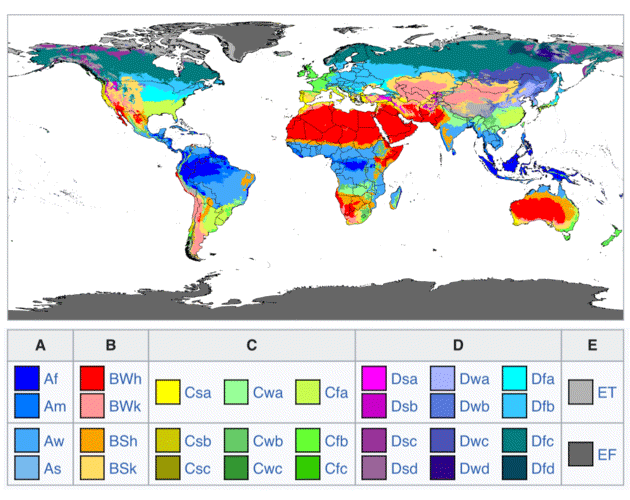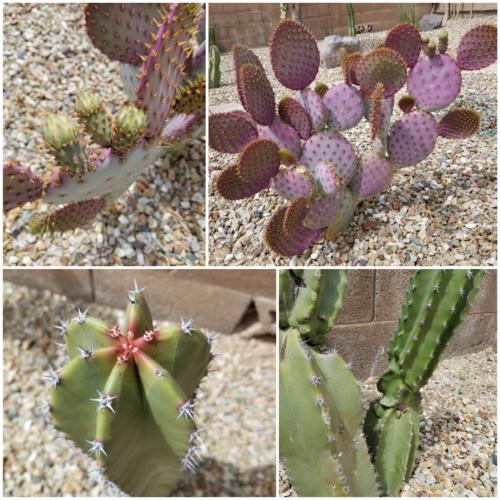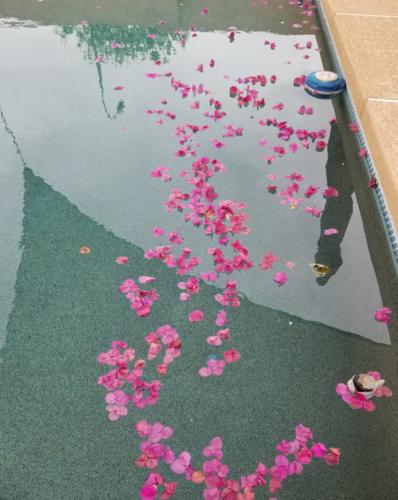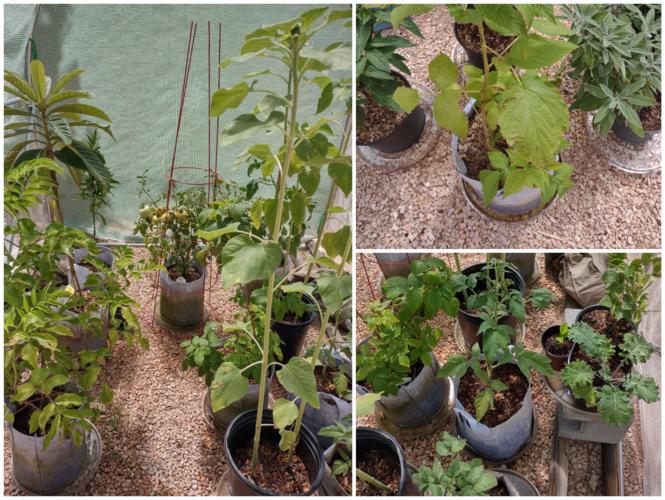January 20, 2024 by Garden Revival Members
Köppen with the Heat: Lessons Learned Gardening in Hot Climates
One of the first things we ask new members on our Discord server is what hardiness zone they’re in. The USDA cold hardiness zones are an easy system to use and help us to understand each other’s growing conditions…most of the time. Minimum yearly temperatures mean little to some of our members, and only tell part of the story for others. Their summers are scorching hot and some of them don’t have cold winters at all.

A system that describes their climates much better is the Köppen climate classification, which divides climates into five main climate groups, with each group subdivided based on seasonal precipitation and temperatures. The five main groups in this system are A (tropical), B (dry), C (temperate), D (continental), and E (polar). A second letter is then assigned to each group except for E, representing seasonal precipitation. Then, another letter is assigned to indicate a temperature subgroup for groups B, C, D and E. Uh, yeah, that’s why we don’t use the system often on the server. But we should. Growing in tropical conditions is very different from growing in the desert. People living in London, England and those living in Austin, Texas, both in hardiness zone 9, have vastly different summers. Plus, advice online (much of which comes from temperate climates) often ignores the scorching effects of the sun closer to the equator.
I’ve asked our community members in hot summer climates to give some advice for growing in their unique conditions. Below is what they said about gardening in their particular Köppen classifications.
— IG
Boise, Idaho — BSk (cold semi-arid climate)
As someone who moved from a moist, temperate climate to a high desert, these are some of the things I've learned:
-
There is such a thing as too much sun. Make sure you plant full-sun varietals that can withstand the intensity of the midsummer heat on a cloudless day.
-
Goodbye moisture! Hot and dry climates tend to mean that overwatering is pretty far down on the list of concerns. Underwatering and evaporation, however, are a different story. Make sure you put down mulch, gravel, or creeping ground cover to keep that moisture in when planting in a sunny location.
-
Seek out shade. Whether you plant in a forest-style with a canopy of larger, sun-hogging plants to shelter more tender leaves or you use a structure or a tarp to cast shade, make sure you have something to protect less sun-hardy plants from the scorching afternoon rays.
-
Xeriscape. If you want a low-maintenance, low-fuss garden in a hot, sunny, arid environment, consider xeriscaping. Cacti and succulents can be vigorous growers, don't ask for much in the way of soil amendment, and don't mind the heat and lack of moisture. Some, like prickly pears, can even be grown for food.
-
Water low and by the cover of night. If you have sprinklers keeping your plants green, make sure they're set to run at night, if possible, and do what you can to make sure water is getting directly on the soil rather than on the leaves. Using a drip line is one way to ensure minimal evaporation and guarantee water droplets on the leaves won't magnify the sun's rays and burn your tender plants.
— Peachy00Keen
Phoenix, Arizona — BWh (hot desert climate)
My best Arizona gardening advice is that "full sun" NEVER means Arizona sun. There are only about two plants that will grow without at least afternoon shade.
My second best advice is don't use landscaping rock near anything but native plants, the reflected heat will roast your plants.
Third piece of advice — it's not a matter of if you get termites, it's when. The ones that live here fly and get blown onto your house in the wind. Get a good exterminator, don't plant anything within 2' of the foundation of your house, and make sure that any water that drips from your AC condensation line runs off at least 2' away from your house.
Bougainvillea grows like poison ivy. Plant it in the rocks. Set it on fire. Don't bother watering it. It couldn’t care less. Keep in mind it's thorny and the thorns have a toxin that makes their prick hurt like a 🤬 so don't plant in high traffic areas. It's also messy so don't plant next to a pool. The one in my front yard didn't get watered for almost 3 years. It's been transplanted twice in those 3 years. It's still flowering and growing.
Many types of tropical hibiscus will grow well also. Mostly the reds and pinks but some other colors with a little care. Again, mine didn’t get water for 3 years other than natural rain water and the roots were half dug out when we redid the irrigation lines and it’s still happy.
— DailyRaven
Delhi, India — Cwa (humid subtropical climate), bordering on BSh (hot semi-arid climate)
If your climate is anything like mine, you also have to struggle to grow plants in temperature exceeding 100°F or 40°C in summer months. I live in a hot and dry climate with summer from March/April to June/July. First and foremost, I want to clarify that I grow plants in pots, so a majority of advice given here may not be applicable to people growing on a piece of land.
My first piece of advice is to move containers where they get shade. Provide shade cloth or other means of shade, where possible. This is mainly required in the peak hot hours and should be removed partially when the intensity of the sun drops.
I typically put my shade up at 10 AM and remove it near 4:30 or 5 o'clock, but it might vary from location to location.
Mulching is another great way to keep the temperature of the soil down and conserve moisture in the soil. It also helps in minimizing temperature fluctuation in the soil. Shallowly rooted and young plants will be most impacted when the top few inches of soil are hot and dry.
One should refrain from transplanting or sowing seeds in the extremely hot months as there is a high chance of failure of young plants in extreme temperatures. Too-warm soil temperatures can kill young seedlings. Transplanting is stressful to plants even without the added issues caused by high temperatures. One should postpone planting or transplanting until cooler temperatures arrive.
Addition of any and all kinds of fertilizers, compost, manure or nutrient additives should be avoided in the peak summer months.
The soil should not be allowed to dry up for long periods of time, but at the same time one should be cautious so that overwatering doesn't occur.
And last but not the least, do what feels right. Don’t be limited to only one method or advice. Don’t be afraid to explore and experience for yourselves. There is no one size fits all advice when it comes to gardening. Every gardener has had a unique experience and history with gardening, a different knowledge base, and a different purpose. Experience and preferences of gardeners can range from community gardening to backyard and container gardening to large-scale gardening, and what each gardener chooses to grow, such as vegetables, fruits, trees and flowers. There are so many different gardeners who all have different thoughts, so it was important to me to learn from multiple, more experienced gardeners and do my own research when faced with challenges in the garden space!
Have fun, take care and happy gardening!!
— philosoraptor
Las Vegas, Nevada — BWh (hot desert climate)
Been gardening on and off in my life for a while. Started as a kid growing around my grandmother's farm in southern Illinois. So most of what I learned gardening was from a climate that had reasonable seasons. But this past year I decided to give my gardening chops a go in one of the hottest climates on earth — Nevada. Temps can reach upwards of 120 degrees, while humidity stays at a constant goose egg — aka 0. I’ve never been averse to adversity, but gardening out here, if you’re new to gardening, can be one of the most challenging places to ever put a seed into the ground. And for the record … you may not even want to put anything into the ground here, as the soil itself is largely dead, and may need tons of organic matter and soil conditioners thrown into it in order to create fertility. But for new gardeners out here looking to put a little food on the table, or a bit of decor around your house/apartment, there are ways to beat the heat.
First thing to consider is the soil. As I said before, the soil here can be pretty much dead, if it isn’t peoples yards being covered in rocks, it's the sheer lack of viable ground that isn’t two feet of sand. Luckily though, cities like Reno and Las Vegas have access to stores where you can buy premade soil mixes like Fox Farm, or Ocean Forest, or you can make your own mixes with local nurseries like Moon Nursery. But making sure your soil has all the macro and micro nutrients it needs is essential. (Make sure you have ample calcium in your soil because it leeches out here like crazy, your plants will constantly be using it to keep strong cell walls and prevent damage.).
Second thing you'll need is containers that are friendly with water. I personally prefer pots, and grow bags, to hold my dirt, and obviously mulch on top, for multiple reasons. Reason 1 is water. As I said, humidity stays at the lowest of the lows. Water that you put on the ground, WILL BE GONE IN SECONDS! And it won't touch the plant, it will evaporate. You can run drip Irrigation systems, and some people can get decent results with these, but I personally have had the most success with grow bags, and water saucers. I go with white fabric grow bags because the temperature on them is a bit more stable than going with a black bag around here. Especially if the black bag has a sheen to it. Plastic, for example, will retain too much heat which will lead to even more water consumption. For point of reference, my soil temperature in white grow bags can be as much as 5 to 10 degrees lower than my cheaper black nursery pots.
My bottom watering technique is based on a pool irrigation system Larry Hall set up (rest in peace friend). Basically, it’s the same concept, minus the gigantic swimming pool. It's also portable and easy to move around if you can't set up a permanent home for your green buddies. Simply get a grow bag, or even one of the cheap walmart fabric bags, throw some potting mix in it and put it inside a saucer that holds water. I personally go with 12 and 14 inch and even 24 inch saucers with about 1 to 3 inches of height on them, and fill them up with water. Depending on the plants you’re growing, that mini pool can last you multiple hours of the day during the hottest temperatures. One downside is a bit of algae that can build up on the outside of the bags, which is an aesthetic downside more than a functional downside. The algae on the outside doesn't hurt the plants. And after a bit more study, I’ve learned the algaes by-products may in fact help the soil.
Third thing is, picking plants that actually will survive the desert heat. You can't just put plants down out here and expect everything to grow. Certain brassicas and plants that may work up north absolutely will not function here. Luckily enough, though, there's a large variety of common vegetables and flowers that will actually thrive in the heat here. So pick plants carefully, they're all different and need and want different things. Pay attention to that because some plants will actually do extremely well out here in the shade — shade cloth isn't a bad thing out here.
Fourth thing to consider in helping your plants to survive in this hellish landscape is the wind. You could have all the things I listed above, but a clean 40mph wind from the south can turn anything you love into a twig pretending to do the limbo real quick. So do pay attention to where wind hits you out here, and prepare to either hide things behind fence lines so your plants only receive a moderate amount of that 40mph wind or stake your plants to keep them from blowing to pieces.
Fifth and probably the least impactful thing, funny enough, is pests. Most other climates you go to where grass grows naturally...also have a lot of life forms in them that want to eat your plants. Luckily enough, though, you won't have to worry about a HUGE swath of these pests here, but there are some that can ruin your plants' day, aphids being one of them. They can appear when you least expect it. Especially considering how empty and dead some of the landscape seems here — it's not kind to life, but life isn't completely absent. So be sure to check out the various insects that are hanging out in your gardens out here. And make sure not to kill...everything. Some creatures that may look like pests, may actually be helping your garden immensely. Those geckos hiding under your bush are a welcome guest eating pests and beetles, and will come back year after year. So make sure whatever pest control you use is safe for the good guys. And for the pests that will attack under the soil like certain grubs, you can plant companion plants in those same pots or beds. For example, marigolds, which grow extremely well in the desert, will deter some pests, and bring pollinators to fruits and vegetables you have around. Avoid monoculture (aka planting tons of the same thing in the same place) as monoculture will bring in a lot of the same pest at the same time to the point where you can't control them. If you do get a sudden infestation, it can be treated with Neem oil or other soft solutions.
— AndromedaDelux
Some of the links in this post may earn Garden Revival a commission. Thank you for shopping through our links.


